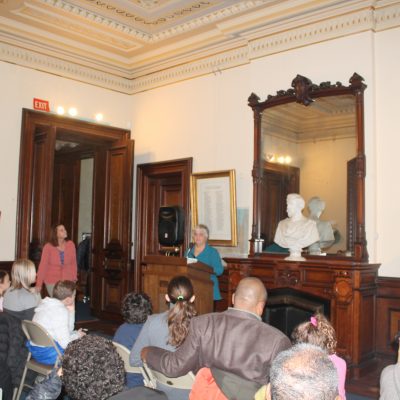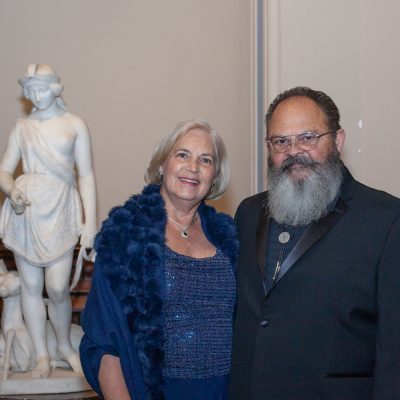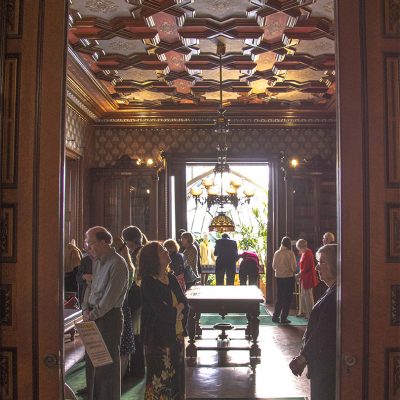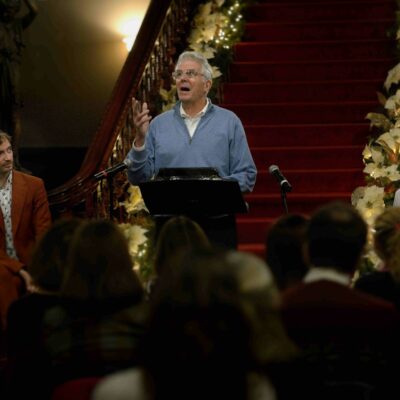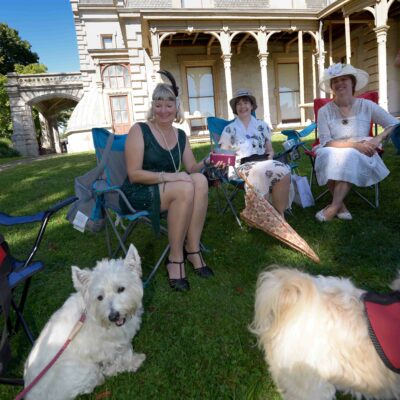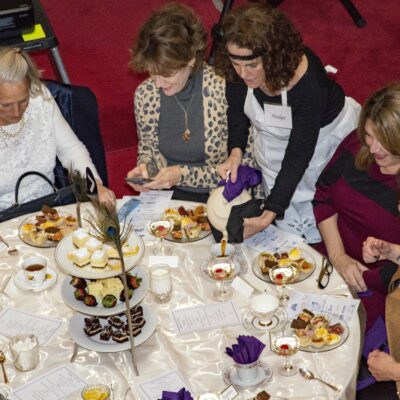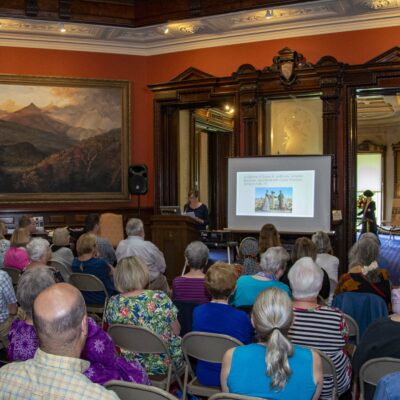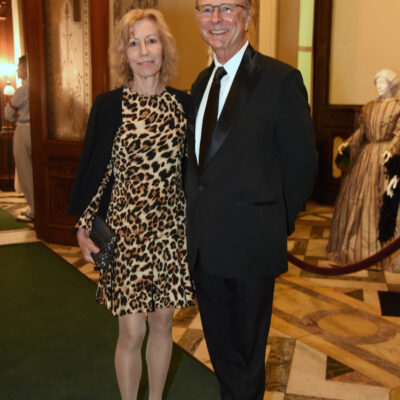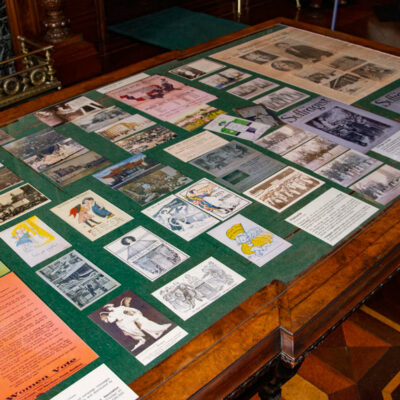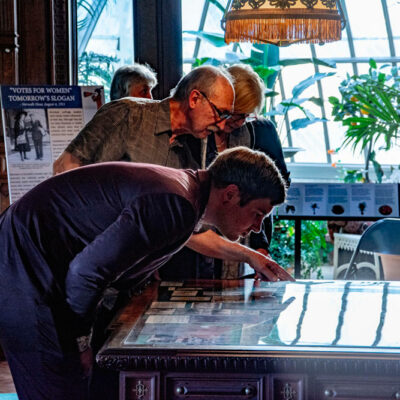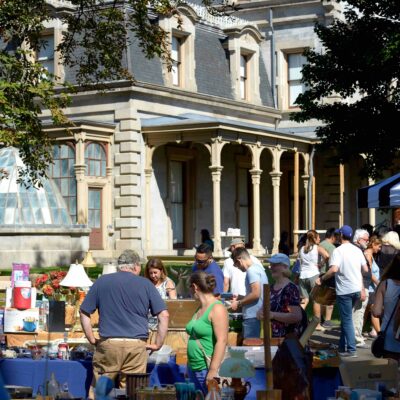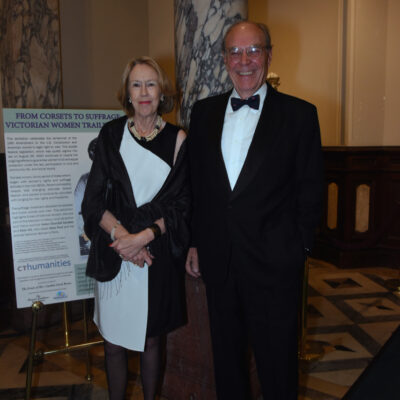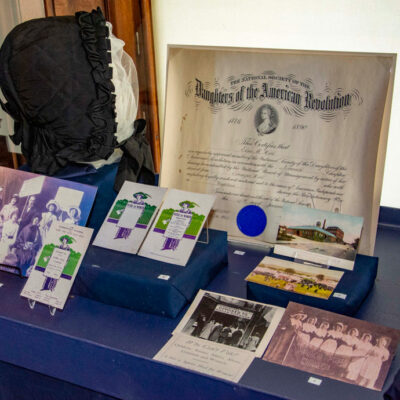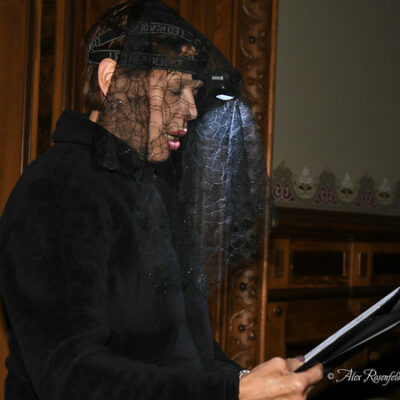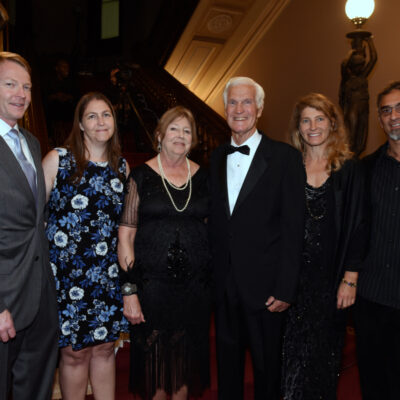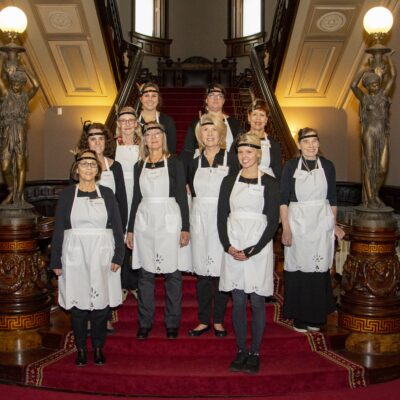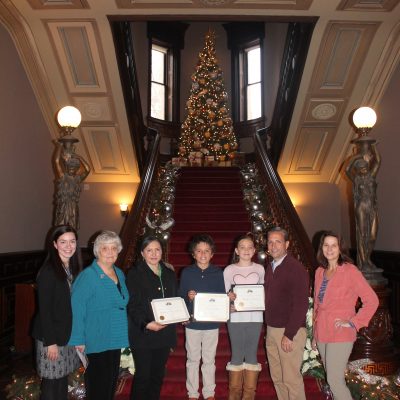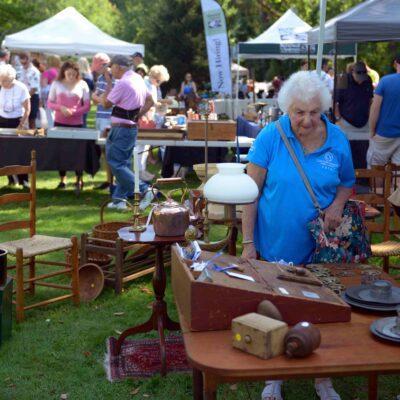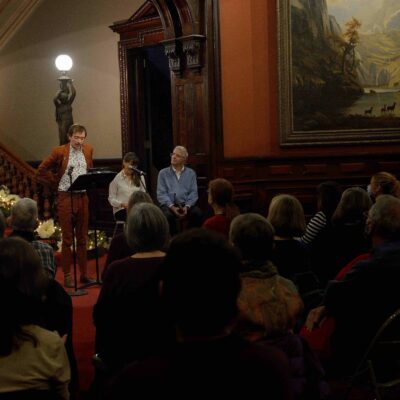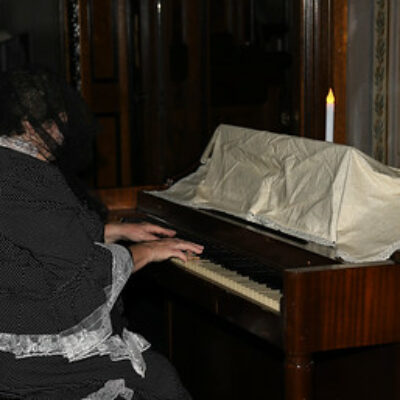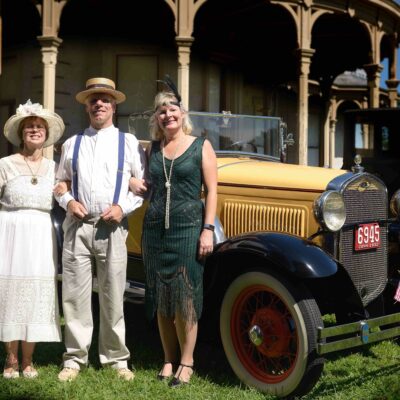In 1876, Charles Drelincourt Mathews, a wealthy merchant from New York, purchased the famed “Lockwood Estate” to serve as a summer home for his family. In June of that year, he, his wife, Rebecca Thompson Mathews, and their four children Lillie, Florence, Charles Thompson, and Harold Chauncey, moved into their new country home along with Mrs. Mathews’ father and brother, Charles Chauncey Thompson and Chauncey Bacon Thompson.
Charles Drelincourt Mathews
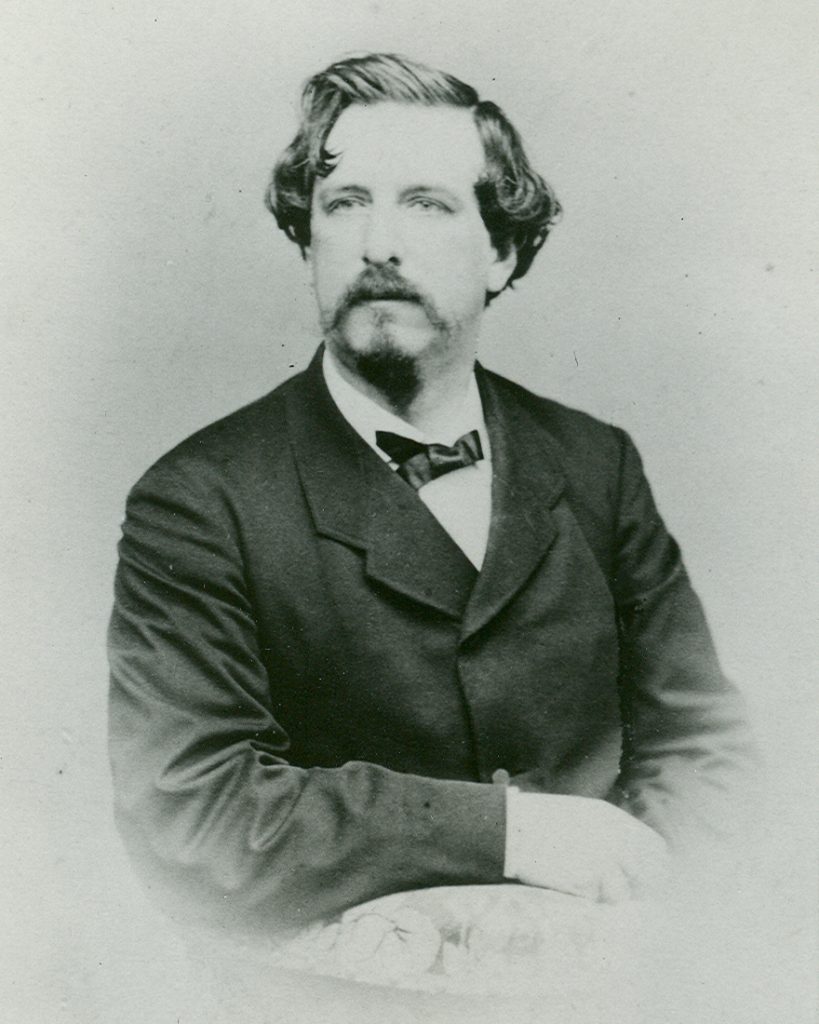
Rebecca Thompson Mathews
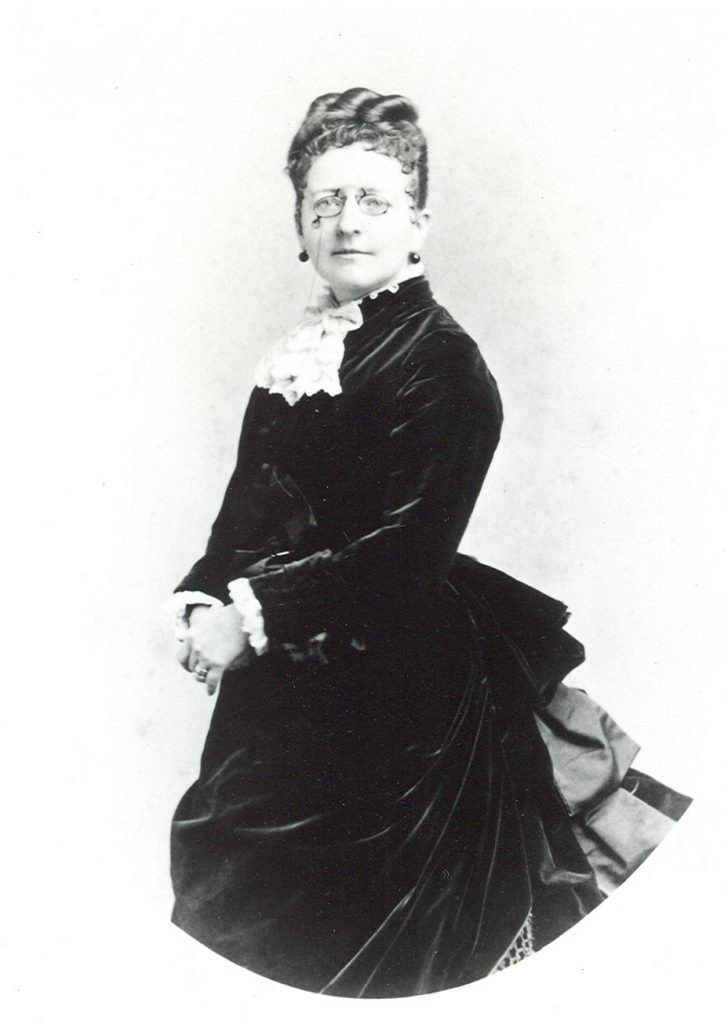
Unfortunately, Charles D. Mathews passed away after suffering a stroke in May of 1879 while his wife Rebecca and daughter Florence were traveling abroad; the funeral was held that June in the Music Room of the house he loved and enjoyed for such a short time.
However, his wife, children, grandchildren, and other relatives continued to enjoy the Mansion every summer for many years to come. Lillie, the eldest of the children, married William M. Martin in 1873. Their second child, Edith, was born at the Mansion. Florence Mathews, born 1855, never married nor had any children; however, she was a devoted aunt to her nieces and nephews.
Charles Thompson Mathews, the eldest son, also never married nor had children. He became well-known in the field of architecture following the publication of two books, The Story of Architecture and The Renaissance Under the Valois; both publications were largely successful and were utilized as textbooks on the subject of architecture at universities such as Yale, Harvard, and Columbia. Charles T. Mathews is known to have designed the Lady Chapel in St. Patrick’s Cathedral in New York City.
Harold Chauncey Mathews was born in 1871 and was the youngest of the four children. In 1904, he married Miss Edith Churchill Candee. Edith’s mother, Helen, was a well-known and respected author, interior decorator, and women’s rights activist. She perhaps is best remembered for her account on surviving the Titanic sinking in 1912. Helen gave the first-published account of the tragedy where she shared a lifeboat with the “Unsinkable” Molly Brown. After arriving in New York via the Carpathia, she retreated to her in-law’s estate, Elm Park in Norwalk, to recover from a broken ankle, which occurred while entering lifeboat number 6. Harold and Edith had four children.
When Charles T. Mathews passed away in January 1934, Florence Mathews retained their 5th Avenue Townhouse, but chose to make the “Norwalk House” her full-time residence, despite the enormous costs in maintaining and running such a large estate. At the time of her death four years later, only Harold remained. Harold, along with Lillie’s two daughters, Florence Courtnay and Edith Martin Mossman, first leased the estate in 1939 to the City of Norwalk and, in 1941, the city purchased the property using a State Bond for “park-purposes.”


